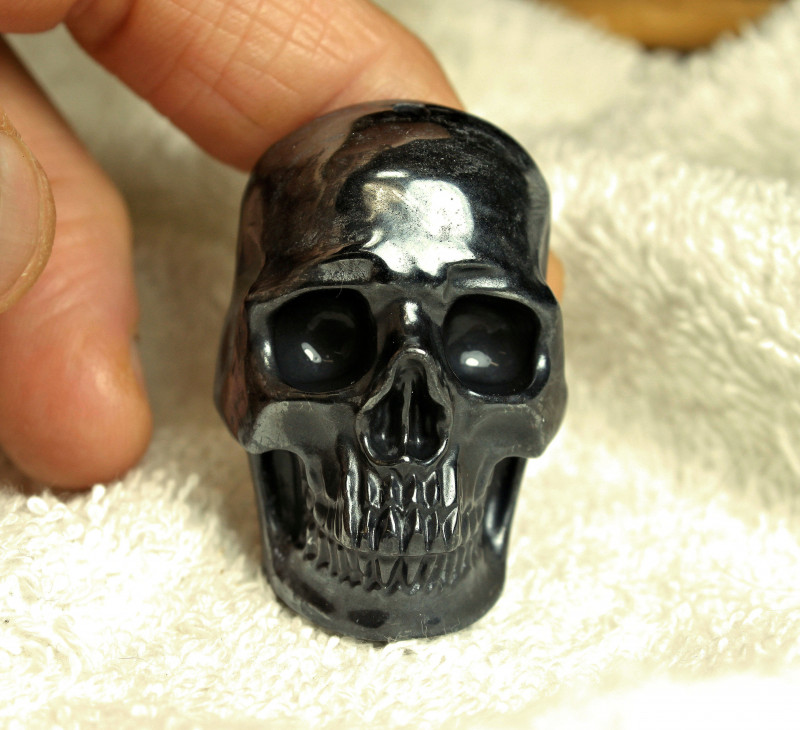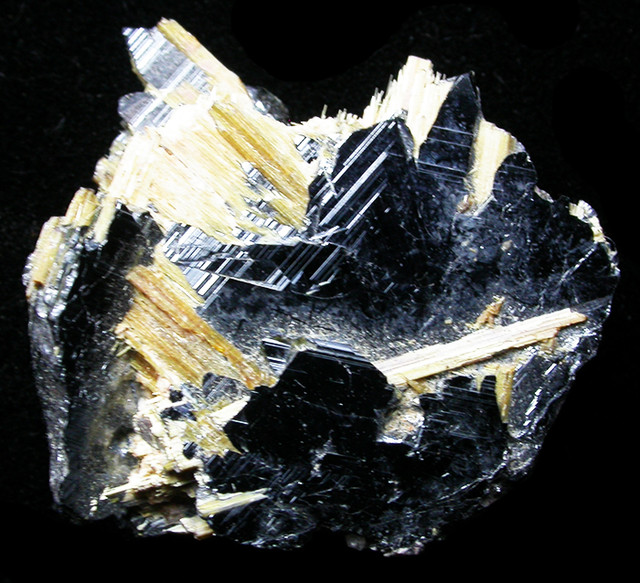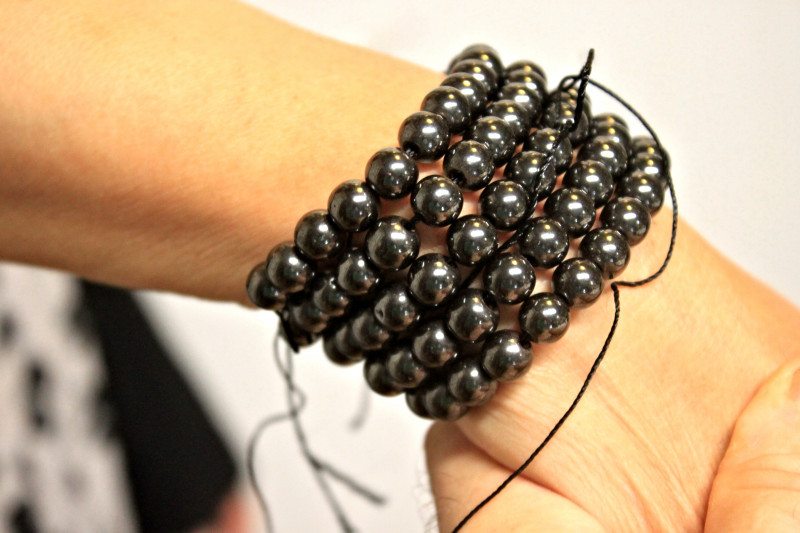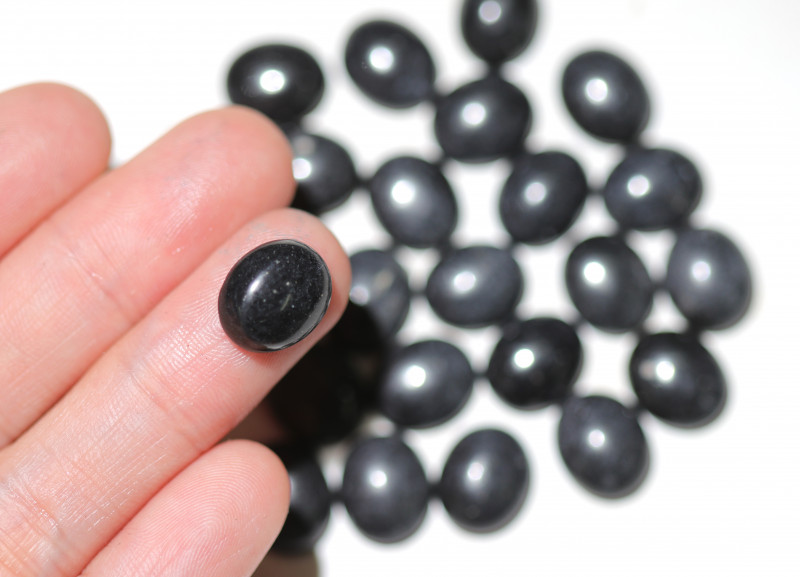
Hematite Stone: Meaning, Properties and Uses
 When you think of gemstones, hematite might not be the first one that comes to mind. But beneath its dark exterior, the hematite stone contains a wealth of possibilities.
When you think of gemstones, hematite might not be the first one that comes to mind. But beneath its dark exterior, the hematite stone contains a wealth of possibilities.
Hematite is an iron oxide stone with a dark, metallic exterior. Once you slice into it or scrape it, however, you’ll see its brilliant shades of red. Its versatility makes it a perfect accessory for everyone. No more racking your brain for gift ideas!
What is hematite used for? If you’ve ever driven a car, used a paper clip, or opened a refrigerator, then you’ve used hematite already! In fact, if you’ve seen red soil anywhere, that’s because of hematite, too.
The value of hematite stone cannot be overstated. So why is hematite valuable?
We’ll be answering that question in this handy guide, along with everything else you need to know about this radiant gem. Strap yourself in and keep reading for our complete guide on the legendary hematite stone!

What is a Hematite Stone?
Hematite, or haematite, is a dark iron oxide mineral known for its trademark red to red-brown streak and a metallic sheen.
As a mineral, hematite is one of our most important iron sources. As a gemstone, it’s just as ubiquitous – hematite is used in everything from masculine and feminine jewelry to carved dice and figurines.
In terms of astrology, hematite is one of the zodiac stones for Capricorn. The grounding earth energy of hematite can tune in a Capricorn’s focus. At the same time, hematite can encourage a better work-life balance, which can be a big challenge for earth signs.
The planet Mars is associated with hematite as well. For starters, hematite connects to Mars’s astrological traits of tenacity and strength. Hematite even exists abundantly on Mars!
As far as its more common uses, hematite is first and foremost a key source of iron. However, it’s used for making pigments, blocking radiation, and even stabilizing ships!
So, what gives hematite this range of abilities? It all comes down to the stone’s fascinating chemical characteristics.
Hematite Specifications and Characteristics
If you pick up a hematite stone, the first thing you’ll probably notice is how heavy it is. So, why is hematite so heavy? Well, it’s dense! In fact, hematite has a 50% higher density than most gemstones.
What’s inside taking up all that space? Mostly iron and oxygen. In its purest form, hematite is 70% iron and 30% oxygen.
On the Mohs scale of mineral hardness, hematite ranks at a medium 5 to 6.5. That means it has a similar durability to tooth enamel, glass, or titanium.
Here’s the complete list of hematite’s specifications:
Chemical compound: iron oxide
Mohs scale: 5-6.5
Color: silver-gray, black, reddish-brown, red
Crystal structure: trigonal (sub-system of hexagonal)
Luster: varies from submetallic to metallic to dull
Transparency: opaque
Refractive index: 2.94-3.22
Density: 5.3
Cleavage: none
Streak: red to red-brown
Since hematite is so unique, you may be wondering: is hematite a precious stone? Not exactly, since the only traditional precious stones are diamond, ruby, sapphire, and emerald. However, hematite is a semi-precious gemstone.

Beyond its chemical makeup, what other hematite properties are important to know?
Hematite Stone Gemstone Properties
We’ve discussed why hematite is crucial to many industries, but what about hematite jewelry? We’ve got you covered there, too!
Next, we’ll cover the crucial factors to examine when shopping for hematite stones.
Cut
When you’re browsing for hematite, you won’t find as many faceted pieces as you would with other crystals. Instead, hematite is most commonly cut into cabochons, carvings, or beads. The mineral itself is tougher but more brittle than iron, making it easier to shape into stunning pieces.
However, this doesn’t mean you won’t find hematite jewelry. For the less-common faceted pieces, jewelers typically cut round, pear, or oval shapes. These can be used for pendants or earrings.
Hematite beads are even more common. These beads are strung into gorgeous bracelets and necklaces. Hematite rings are popular for those who want to harness hematite benefits of protection and grounding on the go.
In the same vein, practitioners of Feng Shui use carved hematite to enhance their chi energy. These carvings usually take the form of hematite figurines, like the laughing Buddha or celestial animals.

Now that we’ve established hematite cuts, let’s move on to color.
Color
The hematite stone naturally grows in quite a few varieties, including kidney ore, martite, iron rose, and specularite. While these each carry their own distinct coloring, the common thread uniting them is a streak of dark crimson.
Although hematite’s crimson shade is a key feature, you only see this color when it’s powdered or cut into thin slices. Unlike other red crystals like garnet or carnelian, hematite has a muted red that comes from the iron-oxidizing into rust.
Speaking of muted, let’s jump into clarity.
Clarity
One of the best parts about wearing gemstones is the way they glimmer in the light. Some stones reflect light more than others, and this factors into their clarity grade.
Gemstone clarity grades are based on a stone’s transparency and inclusions. Fewer inclusions mean better clarity and, therefore, usually a higher value.
When a stone is naturally opaque, the clarity grading is simple: Opaque (O). Hematite falls under this category because light doesn’t pass through it. However, it does reflect light in a dazzling display of metallic shine.
Because hematite doesn’t have varied clarity grades, its value is largely determined by how big the specimen is. And that leads us right into the last of our gemstone factors.
Carat Weight
When hematites are unearthed, they come out in huge crystals. Because of their density and opacity, hematite can be cut down into virtually any carat weight.
The abundance of hematite means stones with higher carat weight are much more affordable than other gems.
All these properties factor into a gemstone’s market value. But each person can see various benefits in the same stone. Let’s take a look at how different groups over time valued hematite.

Hematite History
Hematite has played a significant role throughout history. From the caves of prehistoric times to the battlefields of war, this lustrous gemstone has touched nearly every society of mankind.
Hematite’s history starts all the way back in the Stone Age, no pun intended. The stone’s red coloring and brittleness made it one of the first writing tools known to man. Paleontologists found hematite as red chalk--also called sanguine--in Pinnacle Point, a part of South Africa where human life presumably began.
Later in Ancient Rome, hematite was used as popular jewelry accessories, home decor, and on the battlefield. The Romans viewed hematite as a form of protection against danger and the ancient equivalent of #badvibes. And they weren’t the only ones.
Many peoples throughout time utilized hematite’s defensive powers. Native Americans wore hematite as war paint to ensure protection and intimidate their enemies. The Egyptians buried hematite powder in their pharaohs’ tombs, most likely to protect the treasured remains from looters.
While ancient civilizations certainly accessorized and decorated with hematite, it didn’t become popular as jewelry until the Victorian era. Nowadays, hematite is used to make a fine grain called rouge, a compound for cutting and polishing metal.
If you’re an artist, you may have come across “ochre-yellow” paints. What you might not know is that ochre is a clay earth pigment often colored by hematite. With dehydrated hematite, you get red ochre, but with hydrated hematite, you get yellow ochre.
As you can see, hematite has been on Earth longer than anyone alive today. So, how did it come about?
Hematite Stone Origins and Sources
Hematite exists in all kinds of rock and mineral deposits: igneous rocks, metamorphic rocks, sediment beds, and lavas.
Most of the time, though, you’ll see hematite in sedimentary deposits, layered between magnetite and the quartz mineral chert. These layered deposits are called banded iron formations, or BIFs.
So, what types of hematite exist in nature?
Popular Hematite Varieties
Natural hematite is a stone of many faces. Based on environmental factors like water or soil, hematite stones form a variety of fascinating shapes.
One shape you’ll often see is the slab. This variety is called specularite and consists of mirror-like hematite flakes that form a stack of plates. The plates show off hematite’s metallic glitter as you turn the slab.
Another intriguing variety is the kidney ore. This hematite stone is named for its spherical surface resembling a kidney. Its surface typically has red blotches, but it still displays hematite’s trademark metallic shimmering.
If the kidney ore isn’t for you, you might like the iron rose variety. Iron rose gets its name for the flower pattern it grows into during its formation. The layers of overlapping petals are so captivating, you might forget iron rose grew like that on its own.

Where is hematite found?
Hematite Mining Deposits
Many mining deposits are based out of Europe, particularly England and Italy. Other abundant locations around the world include:
Brazil
South Africa
Canada
China
Russia
India
Australia
U.S.A.
You’ve probably heard of the Great Lakes. But did you know that’s where most of the hematite mined in the U.S. comes from? In fact, Lake Superior is the primary source of hematite in the U.S.
While around 50 countries have hematite deposits, Australia and Brazil are the top producers. In 2020, these two countries produced 1,300 million metric tons!
Most of the hematite mined goes to creating steel, but it has plenty of metaphysical uses, too. When it comes to hematite meanings, what spiritual symbolisms might we discover?
Hematite Stone Meaning
Based on its signature red patterns, the name hematite comes from the Greek word hema or haima, meaning blood. The English name for the stone derives from a longer Ancient Greek phrase, haimatitēs lithos, meaning “blood-red stone.”
It should be noted that bloodstone, a black silica mineral with red spots, is a different gemstone.
Hematite’s association with blood goes beyond its color, though. Sometimes it was used to prevent too much blood loss, especially for women giving birth.
The most common association for hematite besides blood is magic. Hematite spiritual meaning is tied to its ability to balance the spiritual and physical realms. On an individual level, that could look like protecting your physical body from supernatural forces.
Hematite is called the “Stone of Mental Mastery” for its perceived ability to bring clarity and wisdom to whoever wears it.
Now you’re all caught up with hematite’s spiritual meaning. However, in terms of healing, what is the hematite stone good for? And while it can nourish the spirit, is hematite good for your body?

Hematite Spiritual and Healing Properties
It probably comes as no surprise that the hematite stone benefits for physical healing are tied to blood. Hematite can help regulate blood circulation, easing menstrual pain and leg cramps. Hematite’s high iron content means it can help absorb iron, especially for those who have anemia or follow a vegetarian/vegan diet.
Hematite stones can act as a strong guardian for emotional healing, protecting you from harm and grounding you to the present. Have you ever had so many thoughts swirling around you couldn’t think straight? Hematite can help! Along with its centering properties, hematite can be a powerful tool for clarity and concentration.
What about spiritual healing? The hematite chakra corresponds with the root chakra, or base chakra, at the bottom of the spine. This zone carries our basic instincts and connection to Earth.
As humans, we have a primal need to feel safe and secure. When the root chakra is blocked, we can feel frustrated and anxious. Hematite opens it, giving us the foundation to grow and allowing us to see our true purpose in the world.
If this sounds like a sweet deal, you might be wondering: Can you wear hematite every day? The answer will depend on your own energy.
Hematite’s strength can be overpowering and lead some people to feel weighed down without a break from it. Other people do just fine wearing it all day. Our best advice is to trust your instincts and avoid wearing them to sleep.
To ensure you always have a grounding stone on hand, it’s important to know how to clean and cleanse your hematite.

Hematite Care and Maintenance
Healing crystals operate by absorbing positive or negative energy. All that energy can get blocked, so certain crystals should be cleansed to prevent this.
Does hematite need to be cleansed? We suggest doing so! Here are our favorite methods:
Rub the surface with a soft, dry brush to release built-up negative energy.
Immerse your hematite stone in a bowl of sea salt overnight to cleanse and purify.
Charge the stone by placing it on top of a quartz-based crystal (e.g. amethyst, citrine, aventurine).
While hematite stones are stronger than some gems, they’re still fragile. To prevent damage, avoid:
Ultrasonic cleaners
Steam cleaning
Household chemicals like ammonia and acids
Because hematite rusts easily, we recommend keeping it away from water the best you can.
How often should you complete these steps? We suggest you clean hematite once a month. As for cleansing, follow our above advice at least once a month or more often, depending on how much you use your stone.
If you’re ready to start browsing for hematite, keep reading for our pricing breakdown.

Hematite Prices and Value
How much does hematite cost? Overall, hematite is an affordable stone because of how abundant it is.
At wholesale costs, hematite specimens range from $0.05 to $0.25 per carat. Such hematite clusters are usually massive--anywhere from 75 carats to almost 600 carats. Even so, you can find a large hematite specimen for under $30.
Specular hematite prices are slightly higher, with an average price of about $3 per carat.
Hand-crafted hematite carvings are more valuable, too. Most hematite carvings are small pieces--under 2 inches. These can cost around $8 per carat or more, depending on how detailed the carving is. Carvings that are larger than 5 inches carry much higher prices.
Many of the pieces you’ll see marketed as hematite are actually hematine. Hematine is a man-made material that looks nearly identical to hematite.
How can you tell the difference between hematite and hematine? Hematine is magnetic, while hematite is not. The easiest way to check for magnetism is by using something metal, such as a key or bobby pin.
Searching For Peace and Protection?
That wraps up our comprehensive guide on the hematite stone! You can see now why this gem is so much more than meets the eye.
As a healing stone, hematite offers the kind of comfort and security we could all use more of. Even aside from its spiritual properties, it makes a perfect decorative element to add to any room or outfit.
From its presence at the start of mankind to its unparalleled array of uses, hematite is no doubt an invaluable part of our world.
If you’ve been looking for a grounding stone to match anything and everything, explore our hematite stones today!
Search the Gemstone Encyclopedia
Related Auctions
Related Articles
Azotic treatment of Topaz and Quartz is a treatment that creates a layer of color over a gemstone. Learn more about this treatment and check out our stones fro sale.
8th May 2018
Quartz and Topaz are two of the most common minerals on the planet. They also look very similar. Let's look at some properties of them and compare Quartz and Topaz.
23rd Oct 2018
Gemstones and crystals are capable of absorbing and conveying energy, that’s why it’s important to cleanse, re-charge and program your stones so that they may achieve their best potential.
9th May 2018
Latest Articles
Shortite is a rare mineral and rarer gemstone, usually found as colorless or yellow wedge-shaped crystals. Learn the value, history, and properties of shortite in this guide!
9th Dec 2024
Senarmontite is an uncommon antimony mineral mostly used industrially but occasionally collected as rare gems or pearly crystals. Find out all of the traits, uses, prices, and history of senarmontite.
27th Nov 2024
Tantalite is a group of red, brown, or black minerals containing the rare and valuable element tantalum. Discover the uses, history, prices, and properties of tantalite gemstones in this guide!
11th Nov 2024
Article Categories
How To's is where you will find helpful articles from gem Rock Auctions on how to cut gemstones, select gemstones and buy gemstones.
9 Articles





